NOAA’s work to understand our dynamic planet often involves sending people into the atmosphere and out to sea to conduct important research. From “Hurricane Hunter” aircraft that pilots fly directly into hurricanes to fisheries survey vessels that run quietly to avoid disturbing marine life, the Office of Marine and Aviation Operations maintains and operates a fleet of specialized research vessels and aircraft.
Get to know NOAA’s ships and planes with these virtual trading cards!
Planes
Beechcraft King Air 350CER
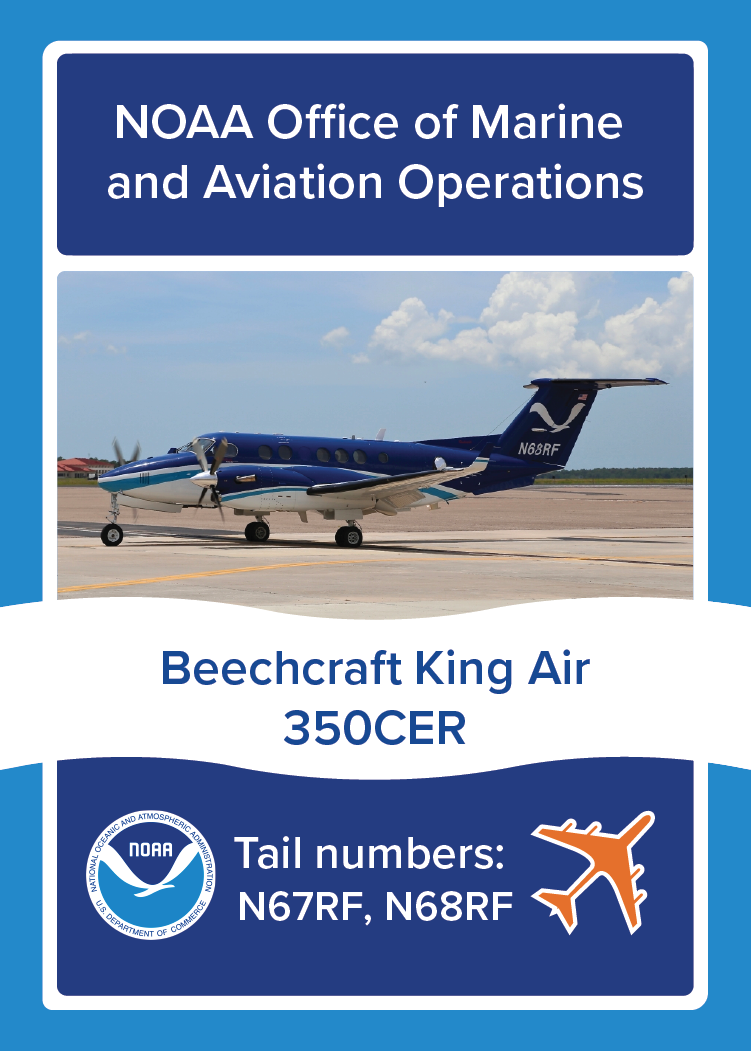
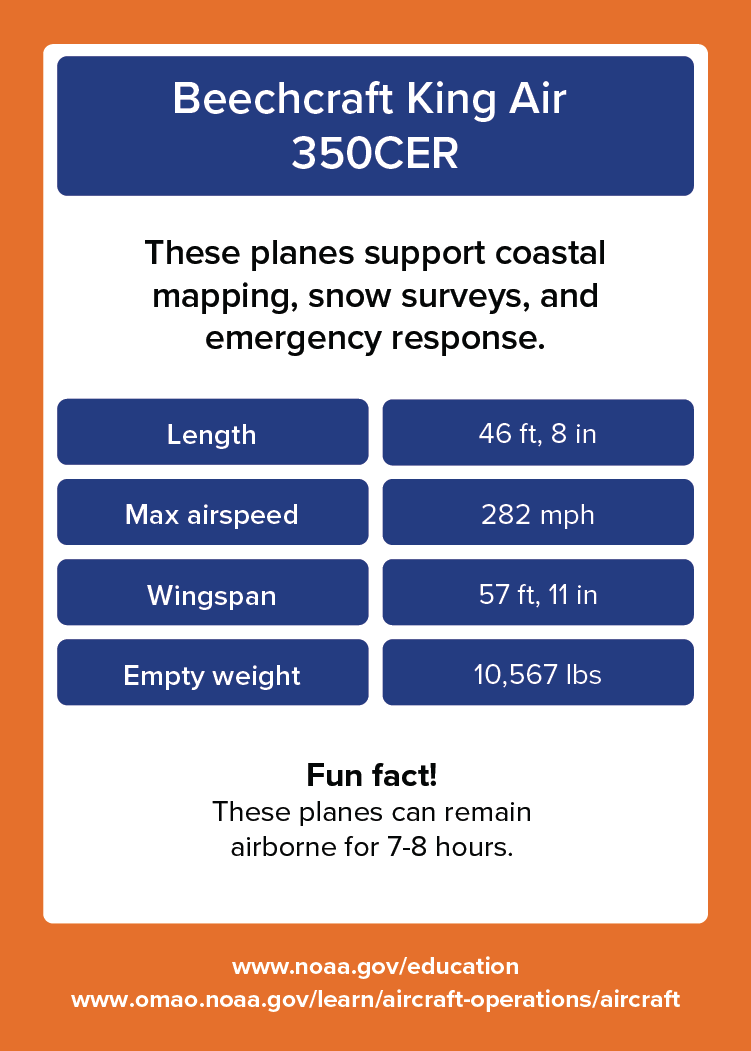
About
These planes support coastal mapping, snow surveys, and emergency response.
- Length: 46 feet, 8 inches.
- Max airspeed: 282 miles per hour.
- Wingspan: 57 feet, 11 inches.
- Empty weight: 10,567 pounds.
Fun fact!
These planes can remain airborne for 7-8 hours. Learn more about the Beechcraft King Air 350CER.
De Havilland DHC-6-300 Twin Otter
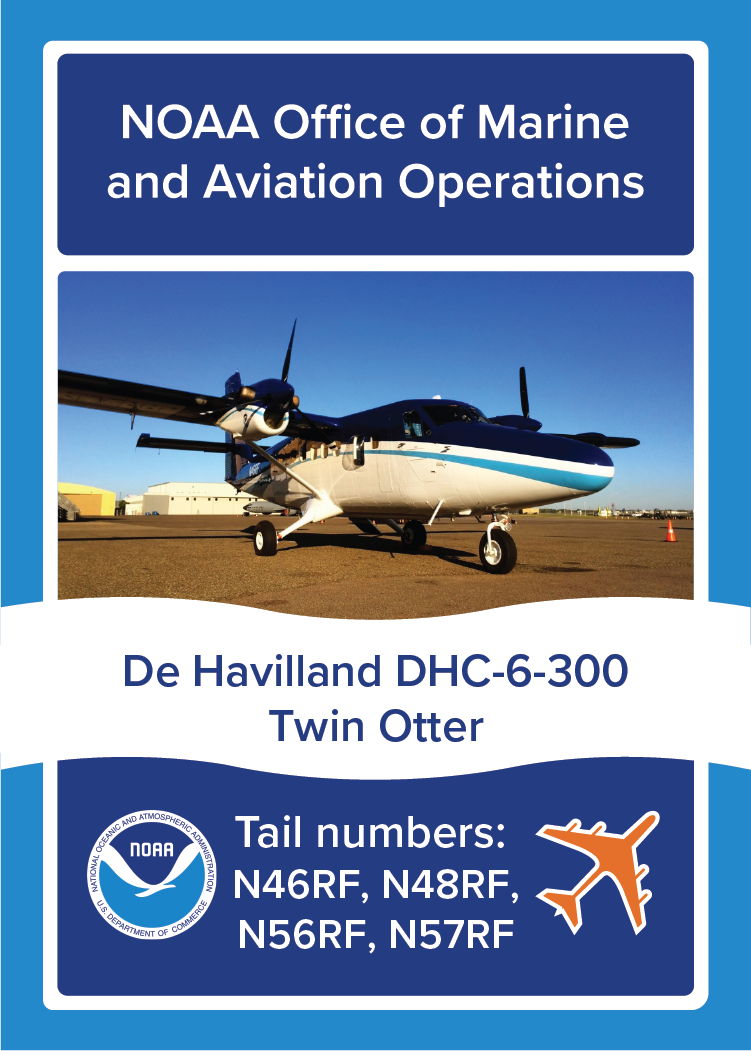
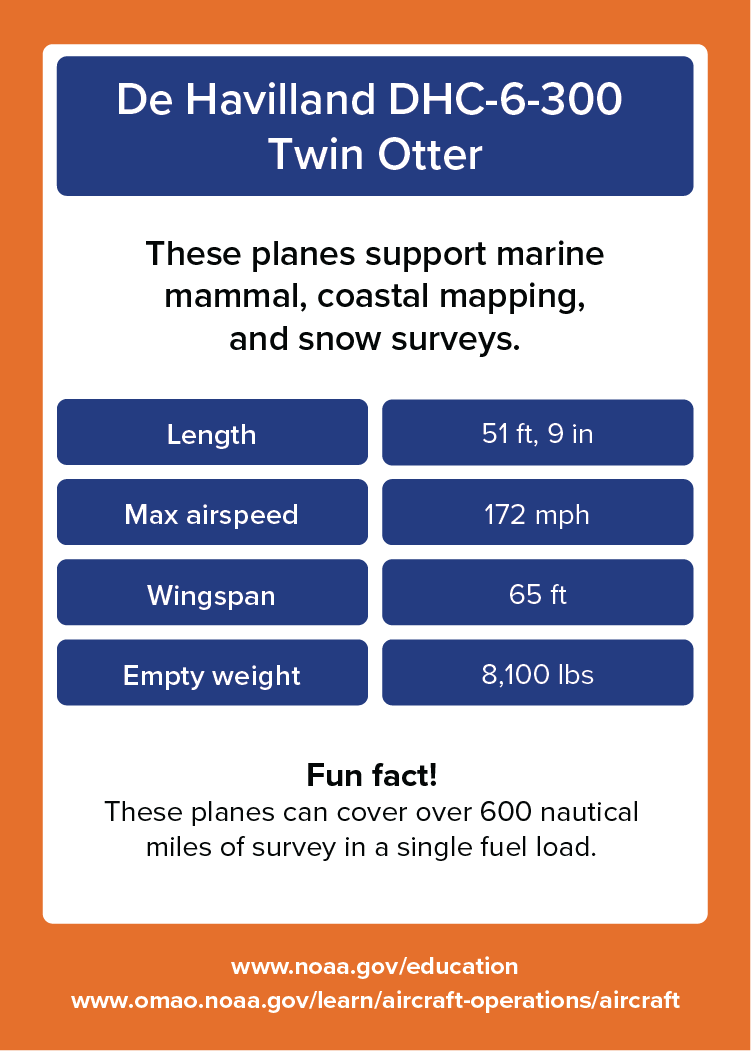
About
These planes support marine mammal, coastal mapping, and snow surveys.
- Length: 51 feet, 9 inches.
- Max airspeed: 172 miles per hour.
- Wingspan: 65 feet.
- Empty weight: 8,100 pounds.
Fun fact!
These planes can cover over 600 nautical miles of survey in a single fuel load. Learn more about the De Havilland DHC-6-300 Twin Otters.
Gulfstream IV-SP
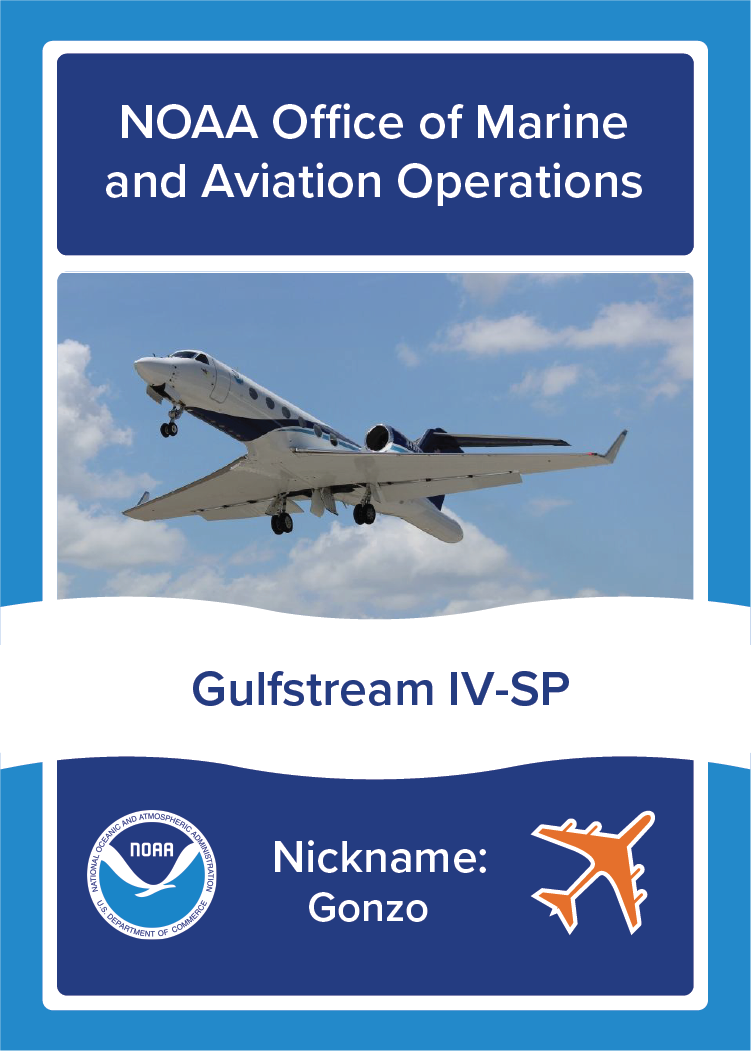
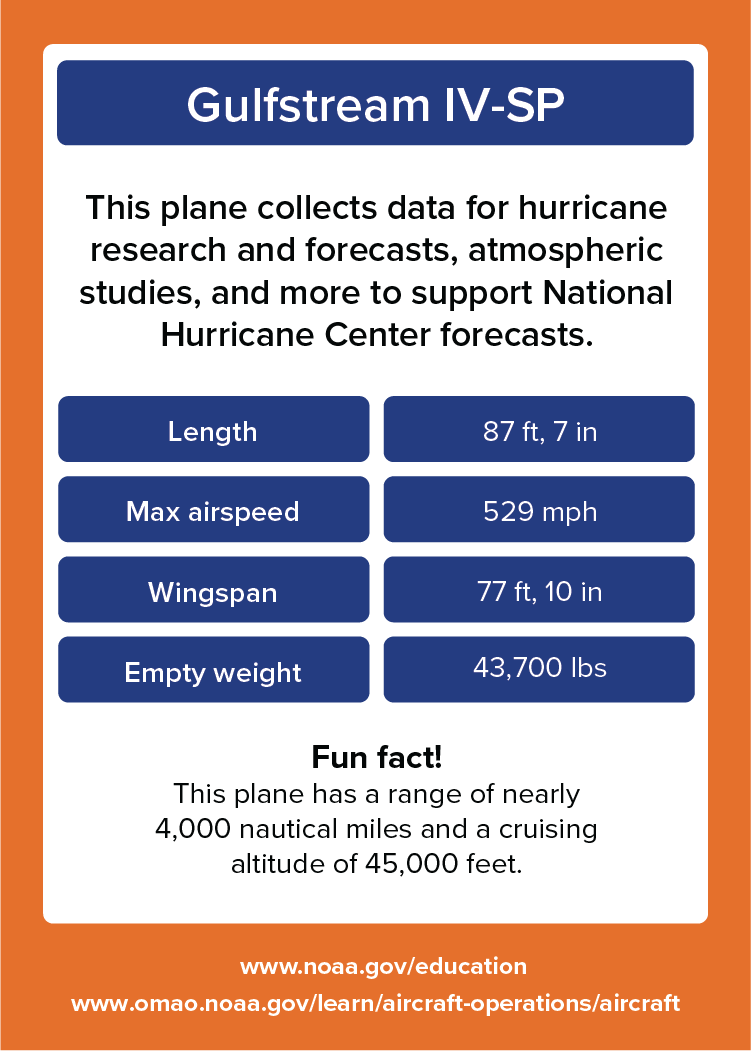
About
This plane collects data for hurricane research and forecasts, atmospheric studies, and more to support National Hurricane Center forecasts.
- Length: 87 feet, 7 inches.
- Max airspeed: 529 miles per hour.
- Wingspan: 77 feet, 10 inches.
- Empty weight: 43,700 pounds.
Fun fact!
This plane has a range of nearly 4,000 nautical miles and a cruising altitude of 45,000 feet. Learn more about the Gulfstream IV-SP.
Gulfstream Turbo Commander AC-695A (Decommissioned)
![NOAA Plane Gulfstream Turbo Commander AC-695A [Decommissioned], NOAA Office of Marine and Aviation Operations, Tail number: N45RF. Image: Photo of NOAA Plane Gulfstream Turbo Commander AC-695A in flight. (Image credit: Kaleigh Ballantine and Molly Wozniak/NOAA Education) NOAA Plane Gulfstream Turbo Commander AC-695A [Decommissioned], NOAA Office of Marine and Aviation Operations, Tail number: N45RF. Image: Photo of NOAA Plane Gulfstream Turbo Commander AC-695A in flight.](/sites/default/files/2022-05/OMAO-Card-GulfstreamTurboCommander-Front.png)
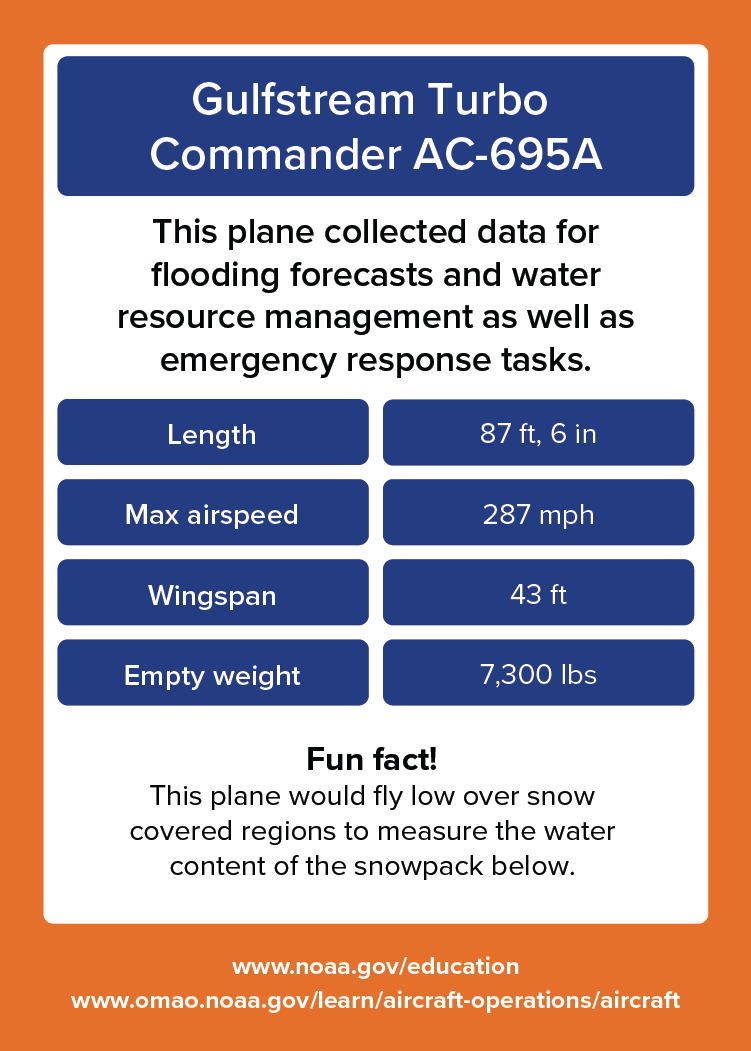
About
This plane collected data for flooding forecasts and water resource management as well as emergency response tasks.
- Length: 87 feet, 6 inches.
- Max airspeed: 287 miles per hour.
- Wingspan: 43 feet.
- Empty weight: 7,300 pounds.
Fun fact!
This plane would fly low over snow covered regions to measure the water content of the snowpack below. It was decommissioned in 2021.
Lockheed WP-3D Orion
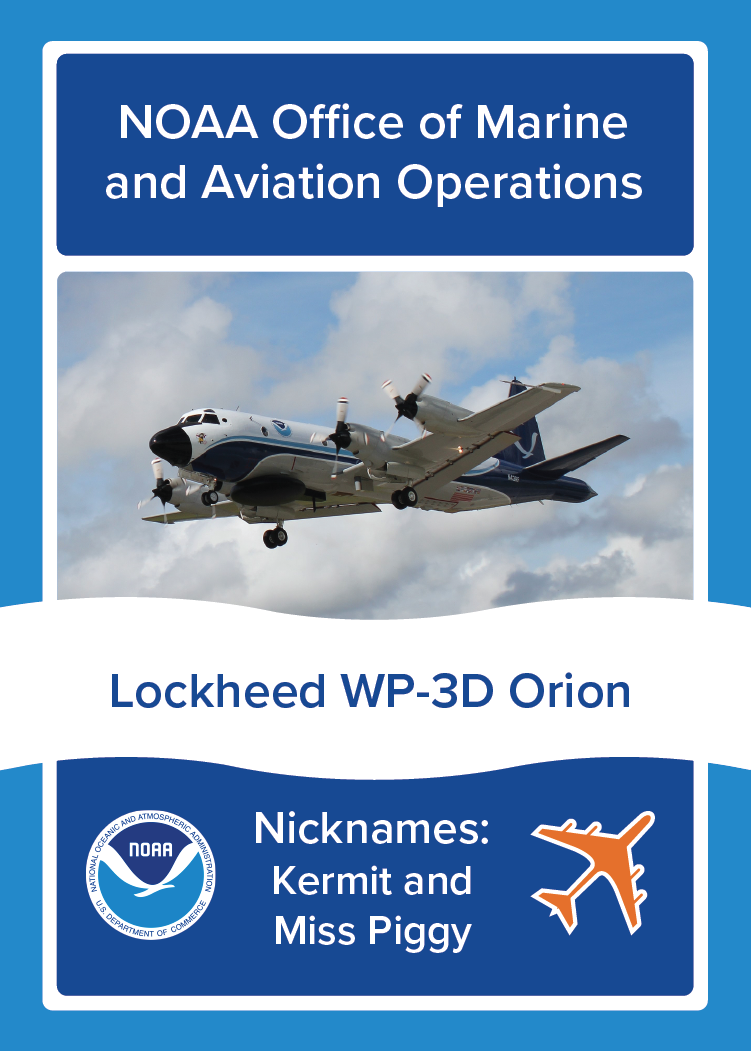
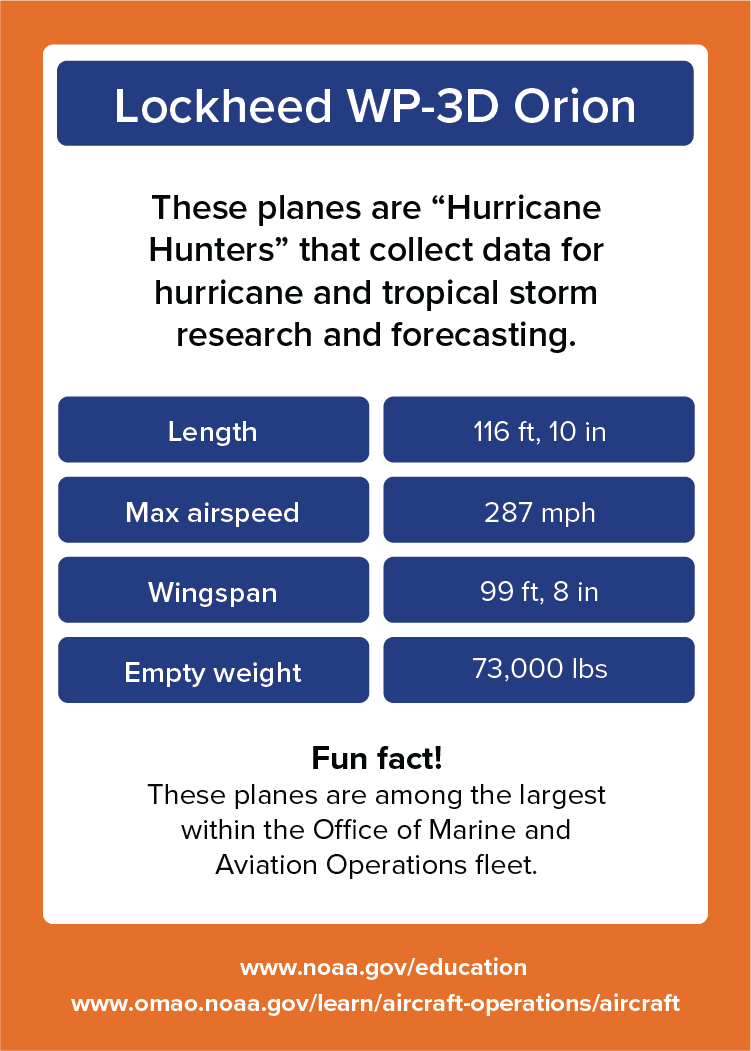
About
These planes are “Hurricane Hunters” that collect data for hurricane and tropical storm research and forecasting.
- Length: 116 feet, 10 inches.
- Max airspeed: 287 miles per hour.
- Wingspan: 99 feet, 8 inches.
- Empty weight: 73,000 pounds.
Fun fact!
These planes are among the largest within the Office of Marine and Aviation Operations fleet. Learn more about the Lockheed WP-3D Orion aircraft.
Ships
Bell M. Shimada

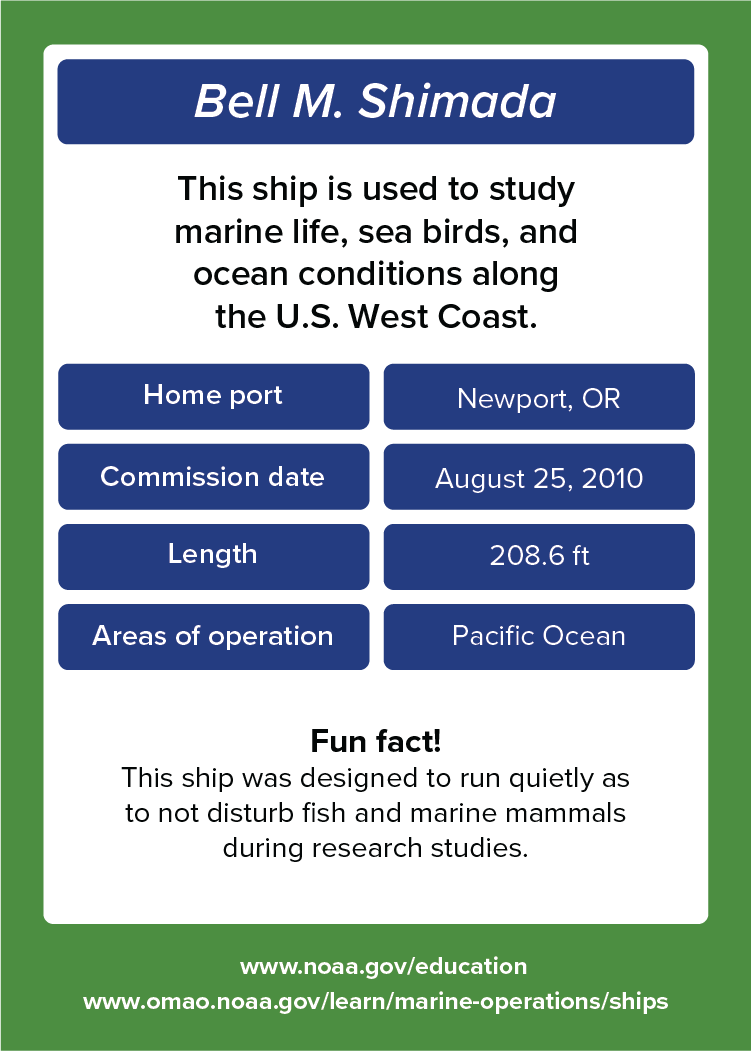
About
This ship is used to study marine life, sea birds, and ocean conditions along the U.S. West Coast.
- Home port: Newport, OR.
- Commission date: August 25, 2010.
- Length: 208.6 feet.
- Areas of operation: Pacific Ocean.
Fun fact!
This ship was designed to run quietly as to not disturb fish and marine mammals during research studies. Learn more about NOAA Ship Bell M. Shimada.
Fairweather
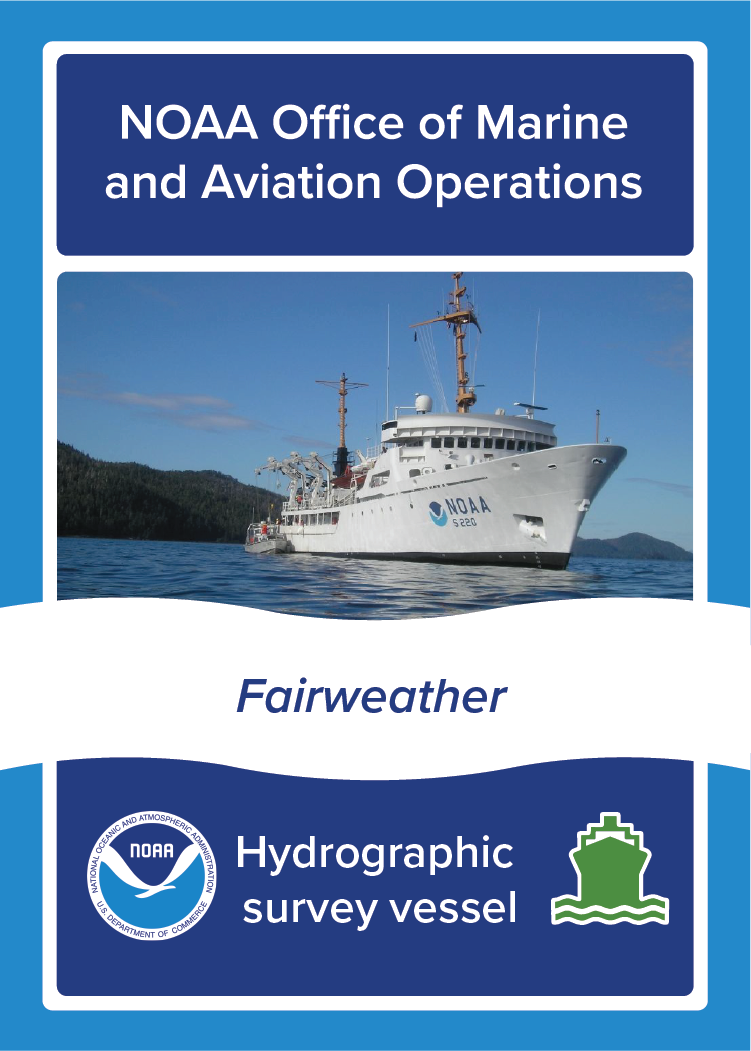
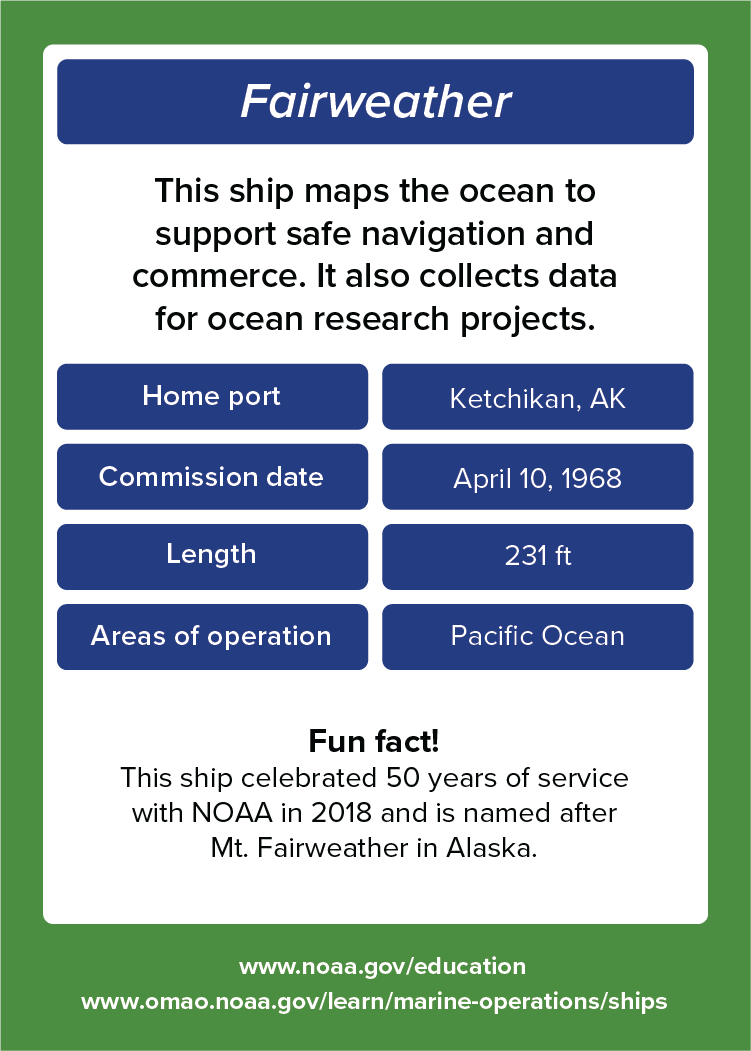
About
This ship maps the ocean to support safe navigation and commerce. It also collects data for ocean research projects.
- Home port: Ketchikan, AK.
- Commission date: April 10, 1968.
- Length: 231 feet.
- Areas of operation: Pacific Ocean.
Fun fact!
This ship celebrated 50 years of service with NOAA in 2018 and is named after Mt. Fairweather in Alaska. Learn more about NOAA Ship Fairweather.
Ferdinand R. Hassler
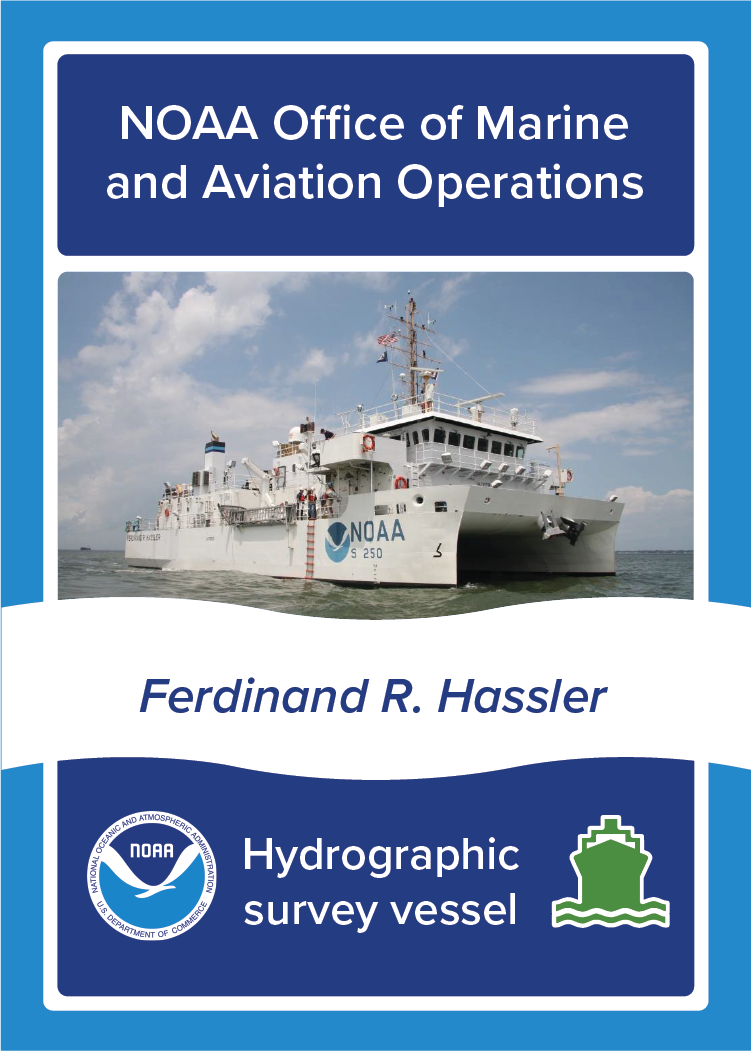
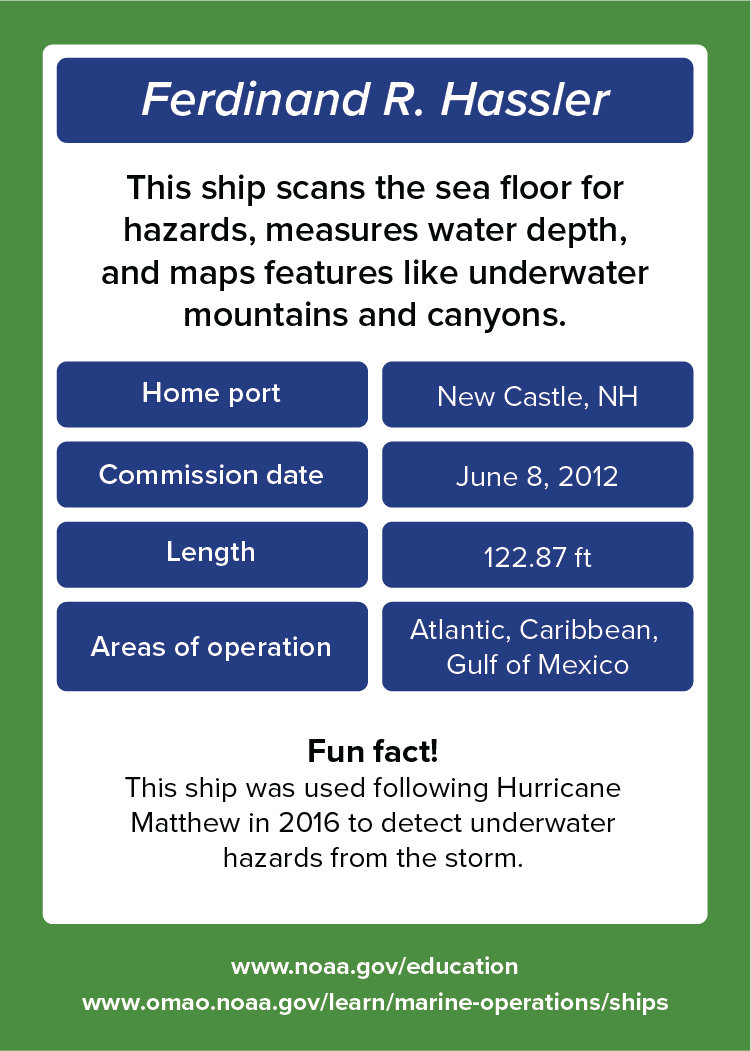
About
This ship scans the sea floor for hazards, measures water depth, and maps features like underwater mountains and canyons.
- Home port: New Castle, NH.
- Commission date: June 8, 2012.
- Length: 122.87 feet.
- Areas of operation: Atlantic, Caribbean, Gulf of Mexico.
Fun fact!
This ship was used following Hurricane Matthew in 2016 to detect underwater hazards from the storm. Learn more about NOAA Ship Ferdinand R. Hassler.
Gordon Gunter

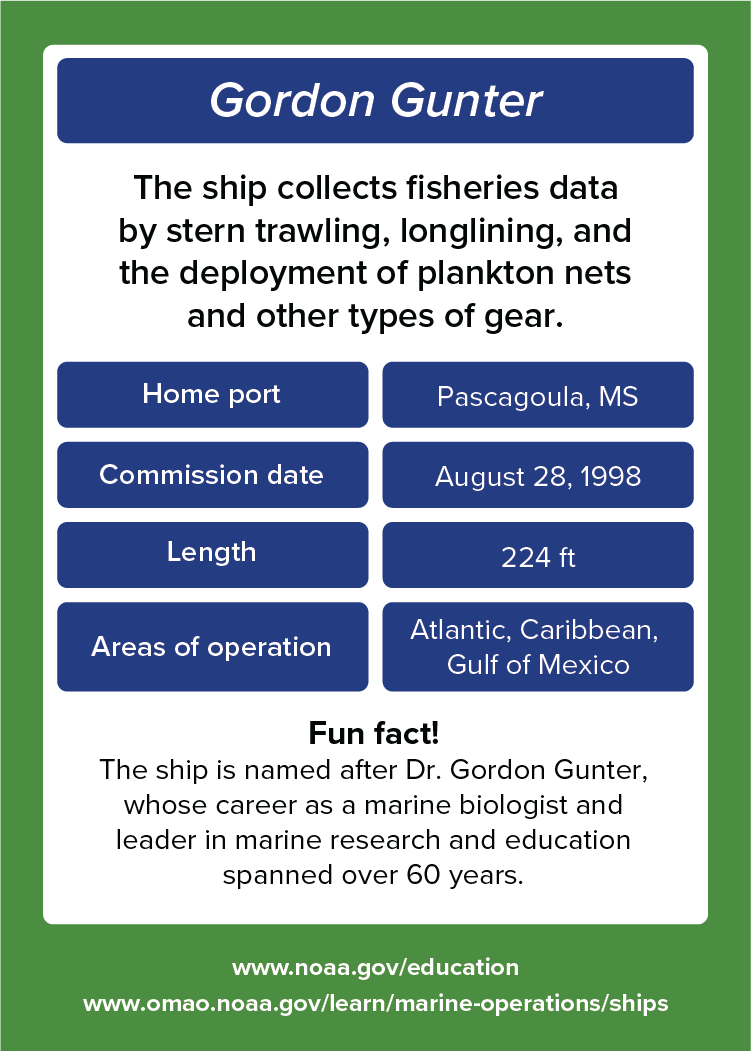
About
This ship collects fisheries data by stern trawling, longlining, and the deployment of plankton nets and other types of gear.
- Home port: Pascagoula, MS.
- Commission date: August 28, 1998.
- Length: 224 feet.
- Areas of operation: Atlantic, Caribbean, Gulf of Mexico.
Fun fact!
This ship is named after Dr. Gordon Gunter, whose career as a marine biologist and leader in marine research and education spanned over 60 years. Learn more about NOAA Ship Gordon Gunter.
Henry B. Bigelow
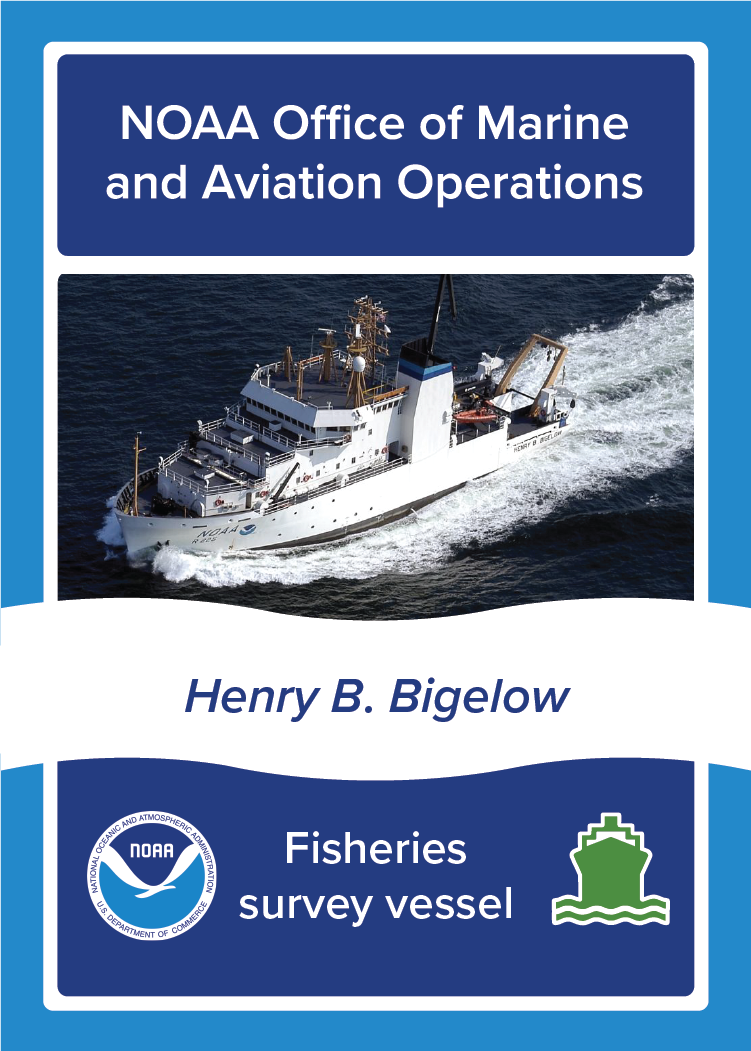
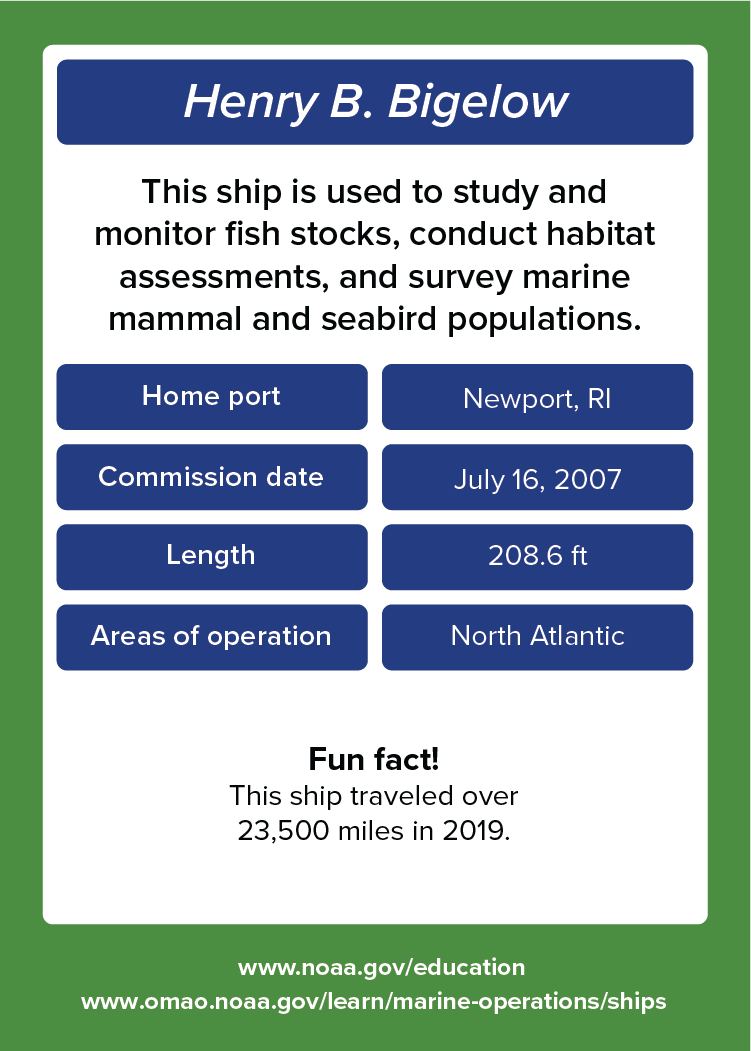
About
This ship is used to study and monitor fish stocks, conduct habitat assessments, and survey marine mammal and seabird populations.
- Home port: Newport, RI.
- Commission date: July 16, 2007.
- Length: 208.6 feet.
- Areas of operation: North Atlantic.
Fun fact!
The ship traveled over 23,500 miles in 2019. Learn more about NOAA Ship Henry B. Bigelow.
Nancy Foster
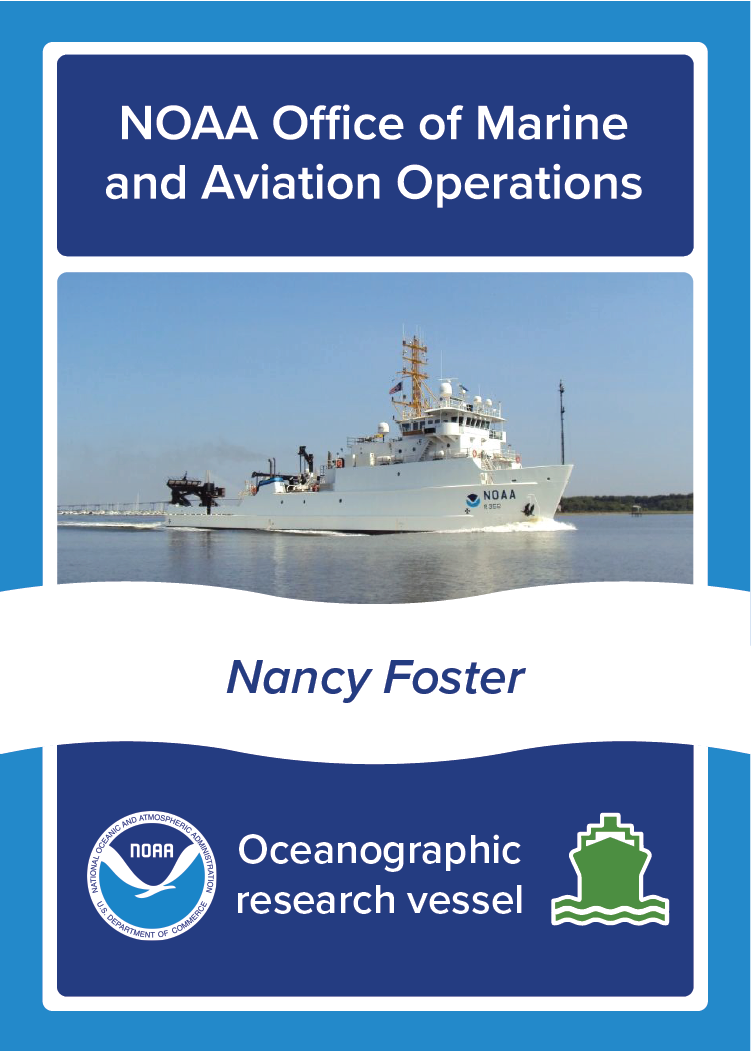

About
This ship supports fish habitat and population studies as well as seafloor mapping surveys.
- Home port: Charleston, SC.
- Commission date: May 10, 2004.
- Length: 187 feet.
- Areas of operation: Atlantic, Caribbean, Gulf of Mexico.
Fun fact!
This ship was named for Dr. Nancy Foster, who led several NOAA programs to explore, map, protect, and sustainably develop coastal and fishery resources. Learn more about NOAA Ship Nancy Foster.
Okeanos Explorer
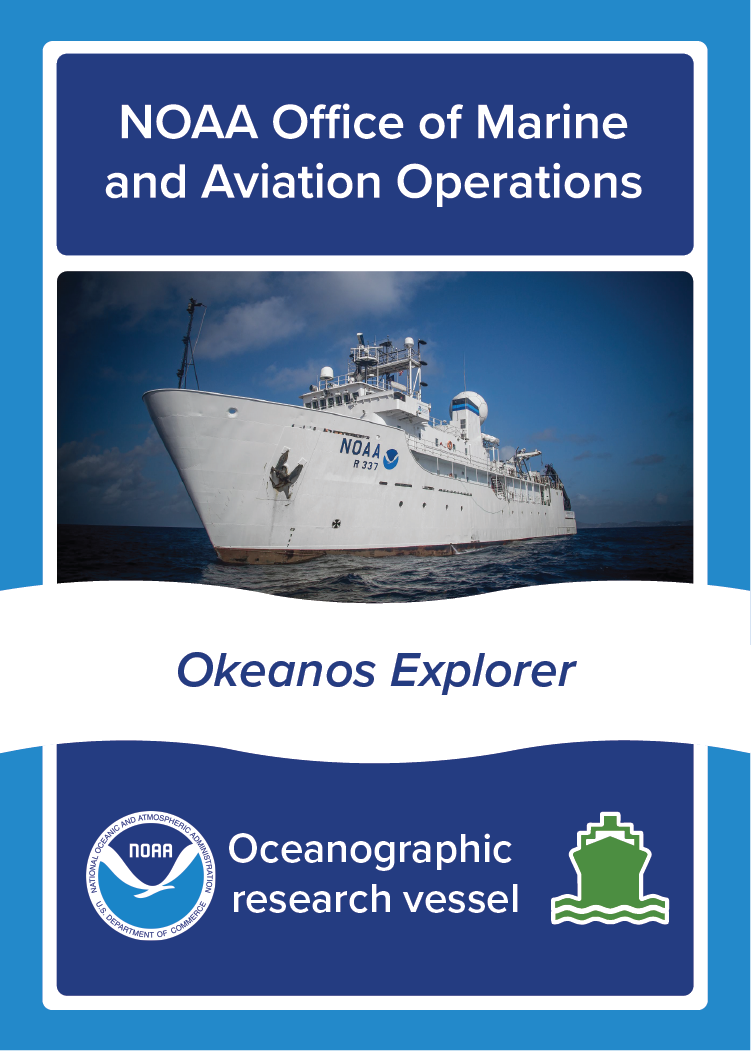
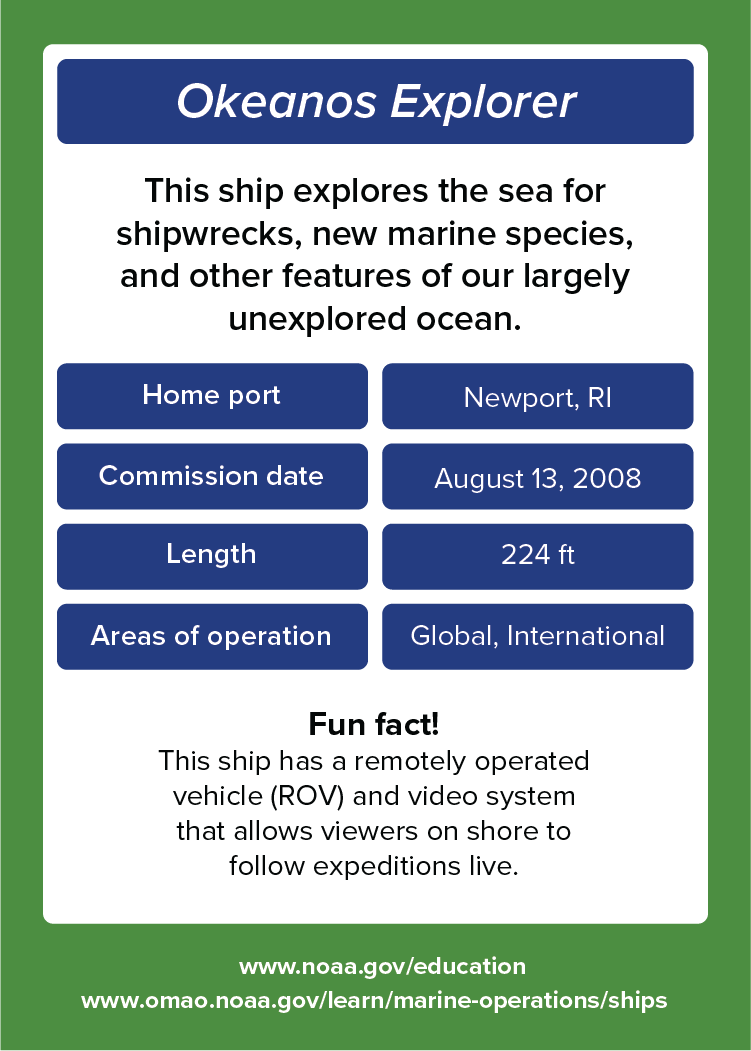
About
This ship explores the sea for shipwrecks, new marine species, and other features of our largely unexplored ocean.
- Home port: Newport, RI.
- Commission date: August 13, 2008.
- Length: 224 feet.
- Areas of operation: Global, International.
Fun fact!
This ship has a remotely operated vehicle (ROV) and video system that allows viewers on shore to follow expeditions live. Learn more about NOAA Ship Okeanos Explorer.
Oregon II
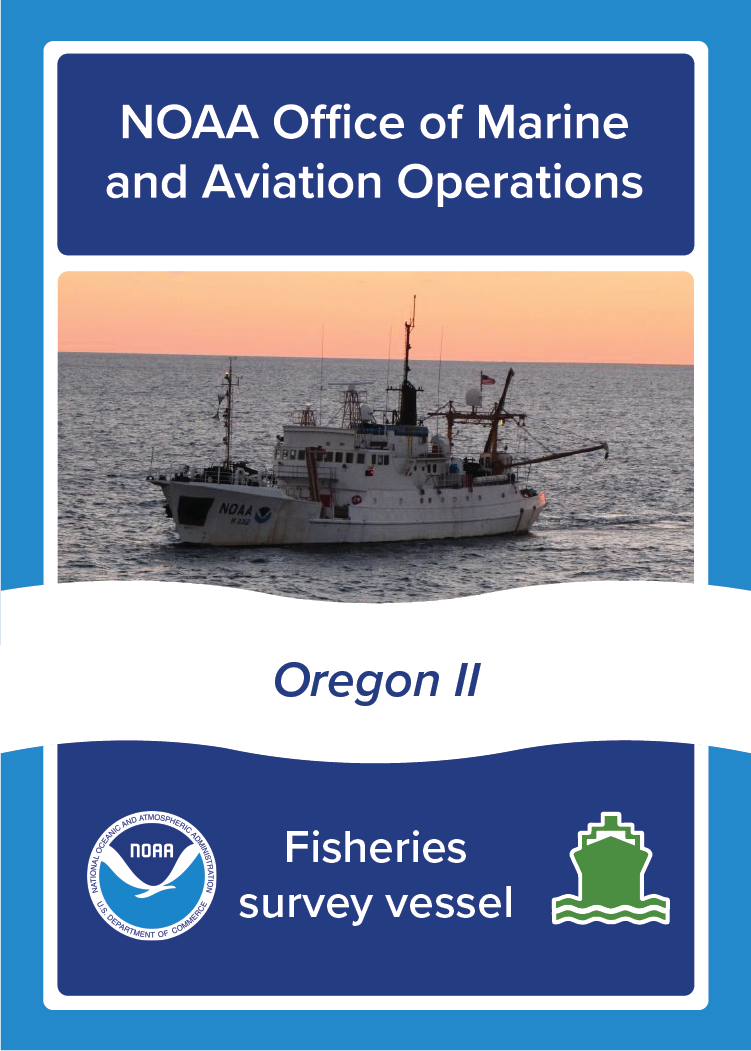

About
This ship conducts a variety of fisheries plankton, and marine mammal surveys.
- Home port: Pascagoula, MS.
- Commission date: March 12, 1975.
- Length: 170 feet.
- Areas of operation: Atlantic, Caribbean, Gulf of Mexico.
Fun fact!
This ship has conducted an annual longline red snapper and shark survey since 1995. Learn more about NOAA Ship Oregon II.
Oscar Dyson
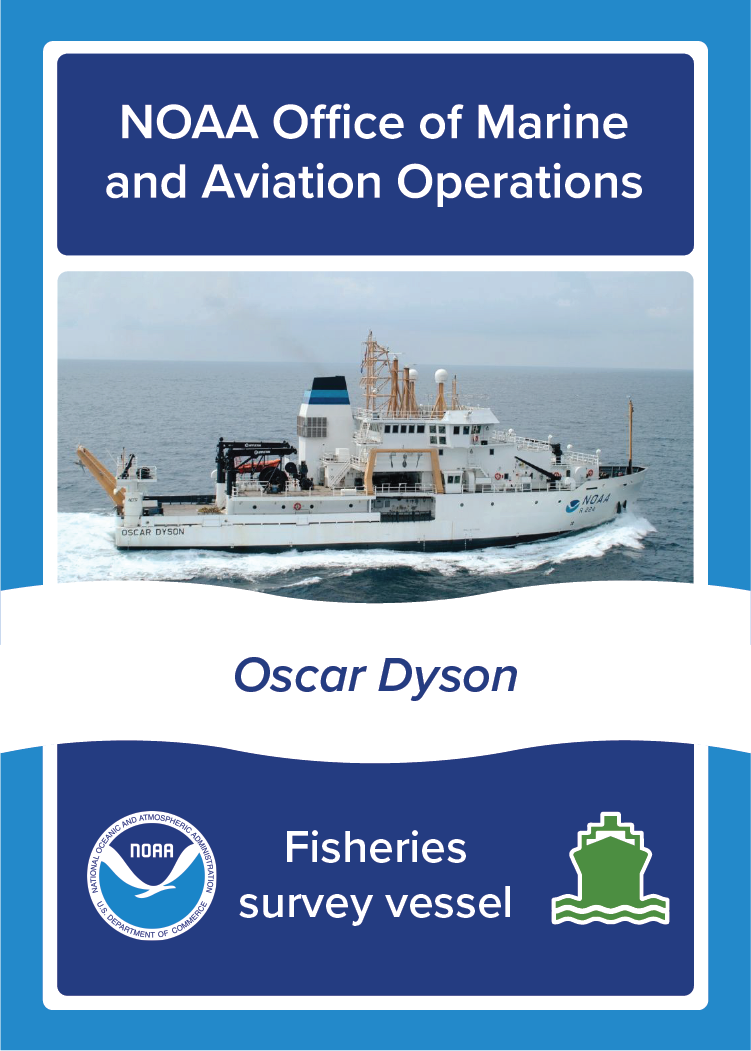
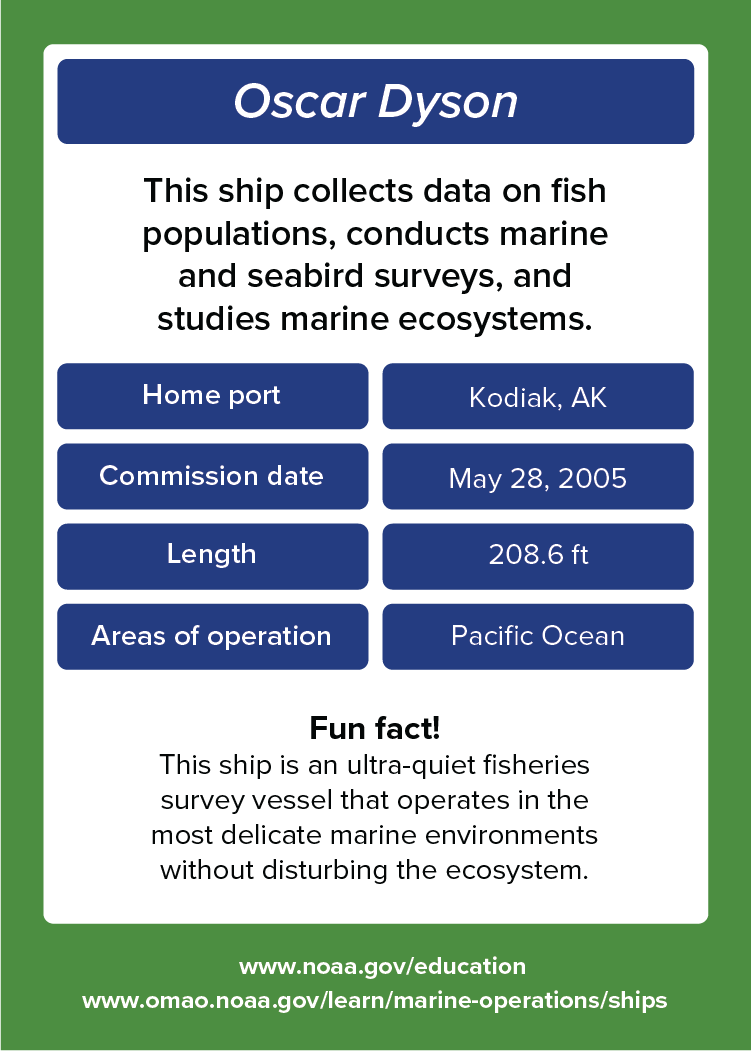
About
This ship collects data on fish populations, conducts marine and seabird surveys, and studies marine ecosystems.
- Home port: Kodiak, AK.
- Commission date: May 28, 2005.
- Length: 208.6 feet.
- Areas of operation: Pacific Ocean.
Fun fact!
This ship is an ultra-quiet fisheries survey vessel that operates in the most delicate marine environments without disturbing the ecosystem. Learn more about NOAA Ship Oscar Dyson.
Oscar Elton Sette
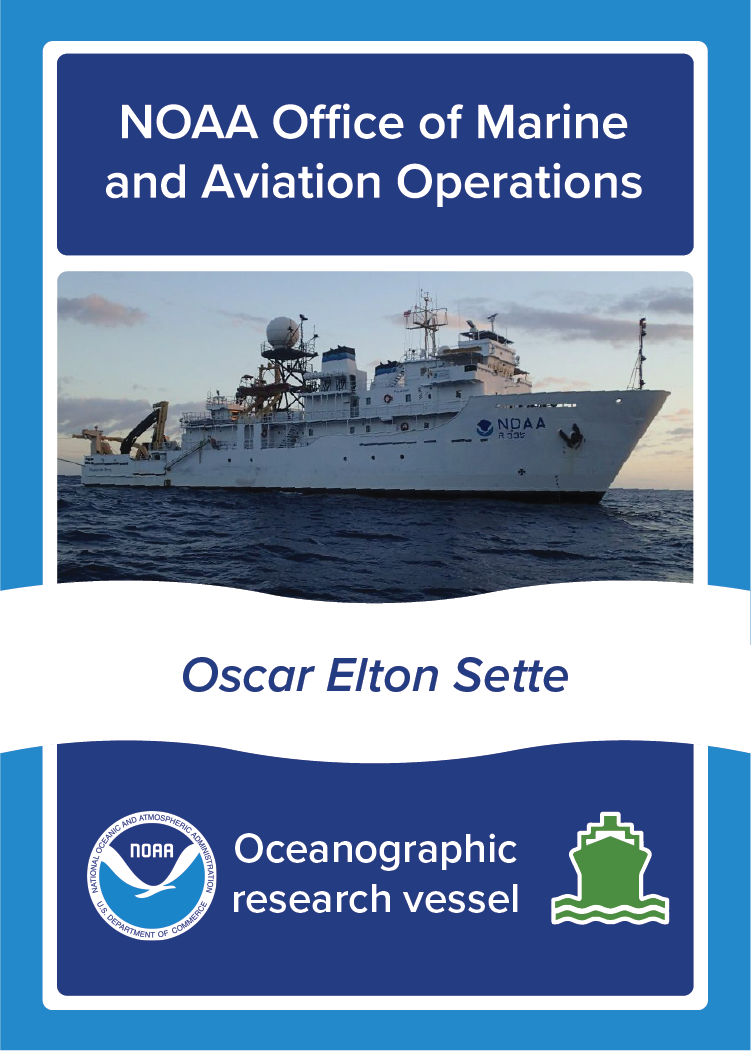
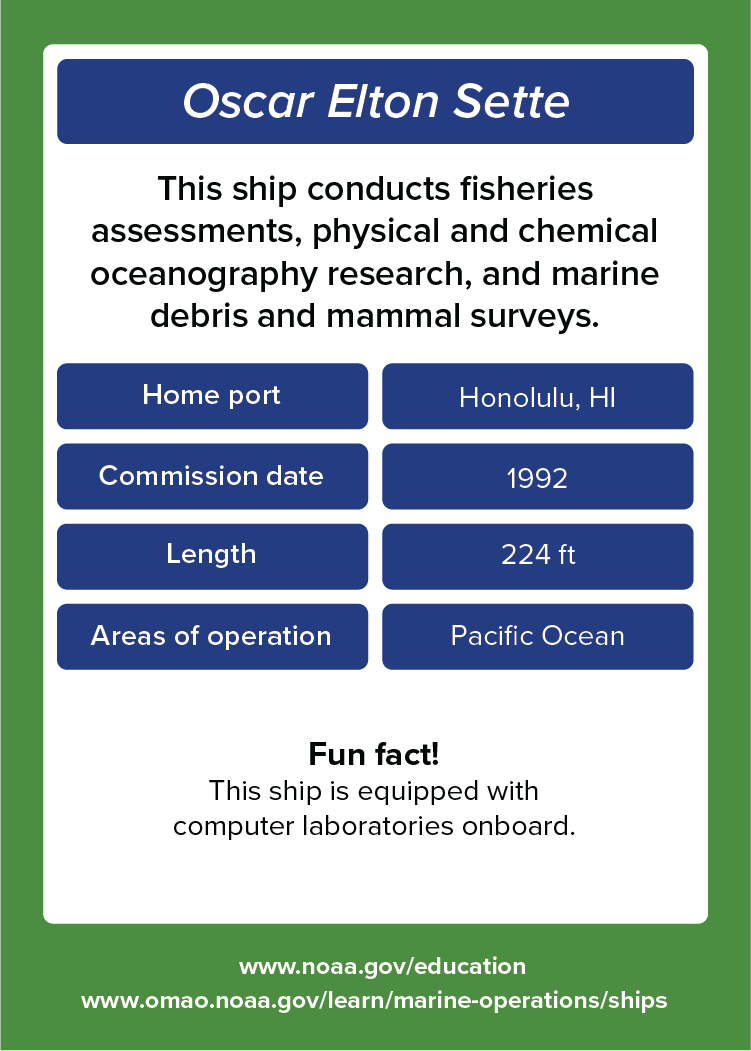
About
This ship conducts fisheries assessments, physical and chemical oceanography research, and marine debris and mammal surveys.
- Home port: Honolulu, HI.
- Commission date: 1992.
- Length: 224 feet.
- Areas of operation: Pacific Ocean.
Fun fact!
This ship is equipped with computer laboratories onboard. Learn more about NOAA Ship Oscar Elton Sette.
Pisces

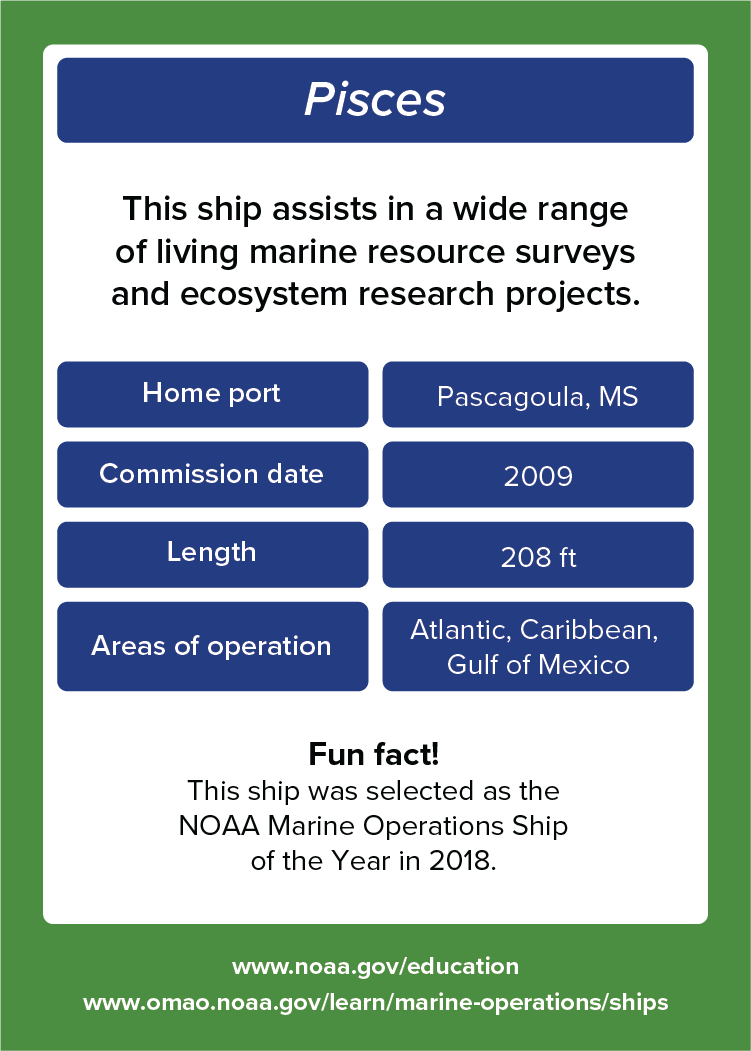
About
This ship assists in a wide range of living marine resource surveys and ecosystem research projects.
- Home port: Pascagoula, MS.
- Commission date: 2009.
- Length: 208 feet.
- Areas of operation: Atlantic, Caribbean, Gulf of Mexico.
Fun fact!
This ship was selected as the NOAA Marine Operations Ship of the Year in 2018. Learn more about NOAA Ship Pisces.
Rainier
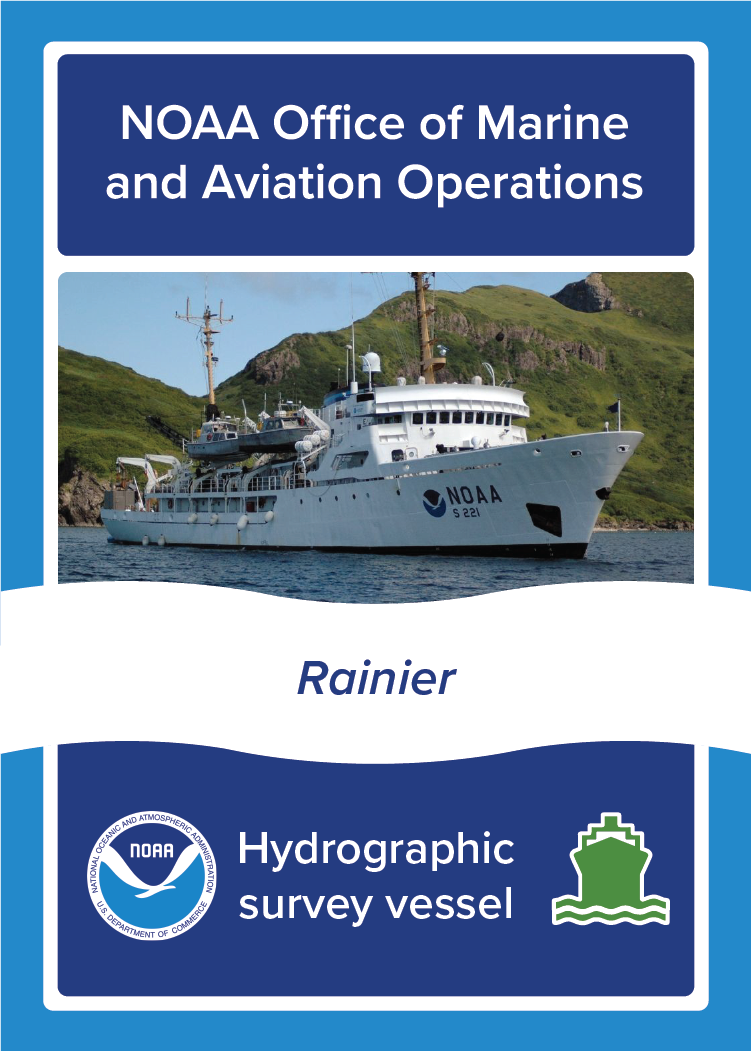
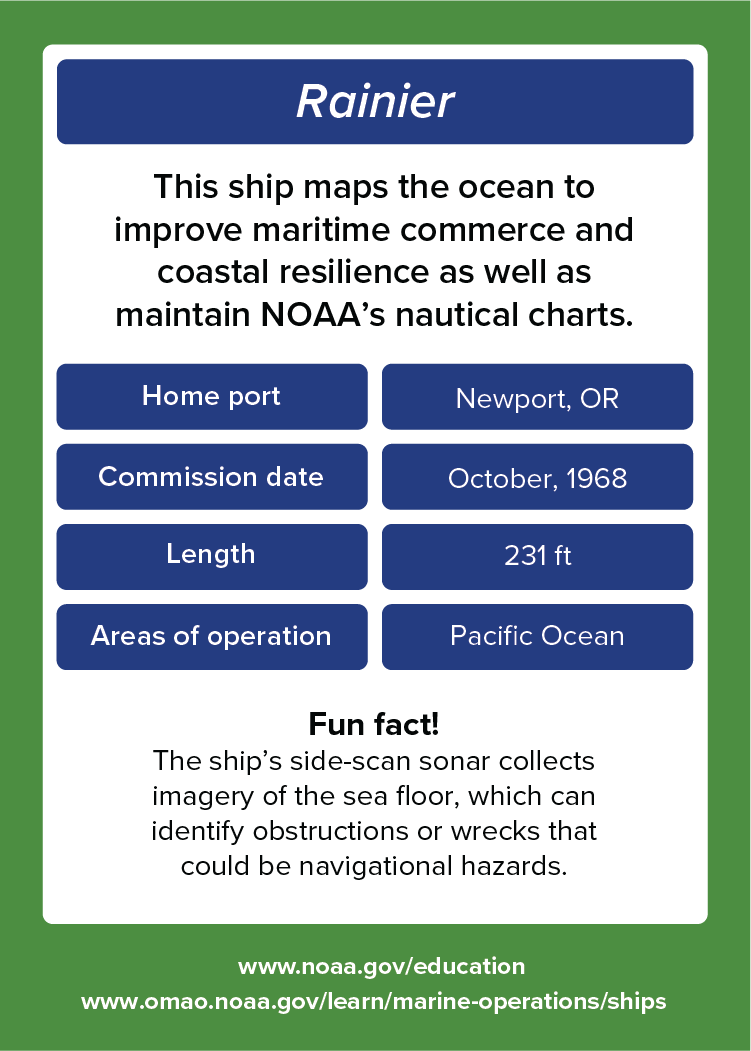
About
This ship maps the ocean to improve maritime commerce and coastal resilience as well as
maintain NOAA’s nautical charts.
- Home port: Newport, OR.
- Commission date: October, 1968.
- Length: 231 feet.
- Areas of operation: Pacific Ocean.
Fun fact!
This ship’s side-scan sonar collects imagery of the sea floor, which can identify obstructions or wrecks that could be navigational hazards. Learn more about NOAA Ship Rainier.
Reuben Lasker
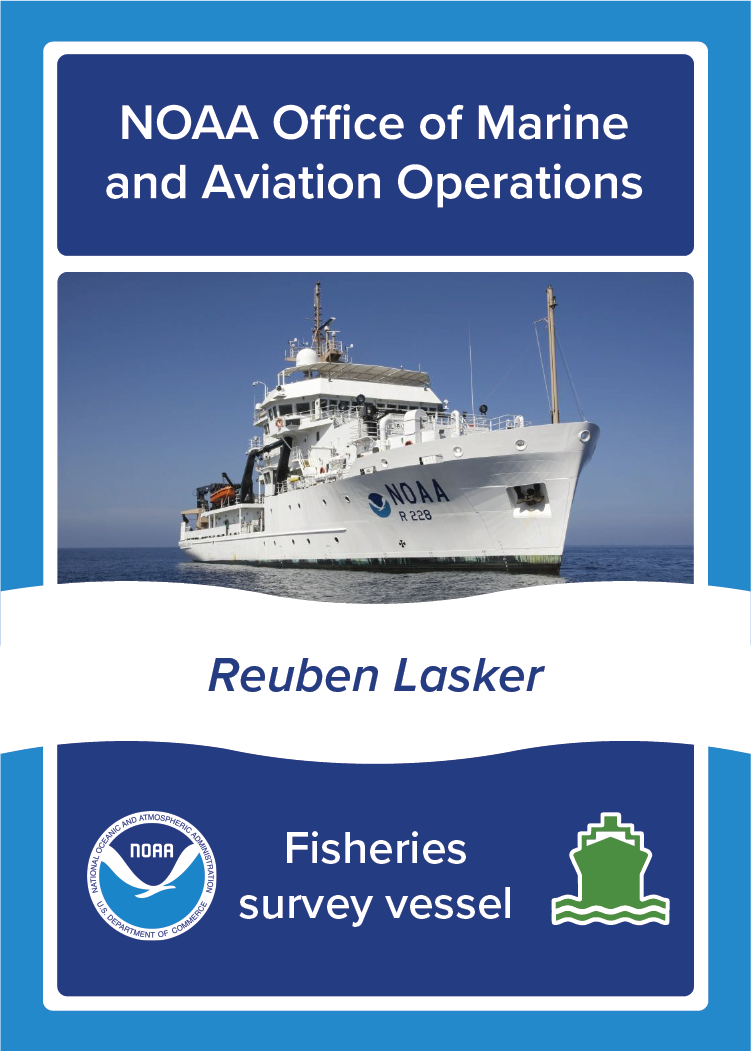
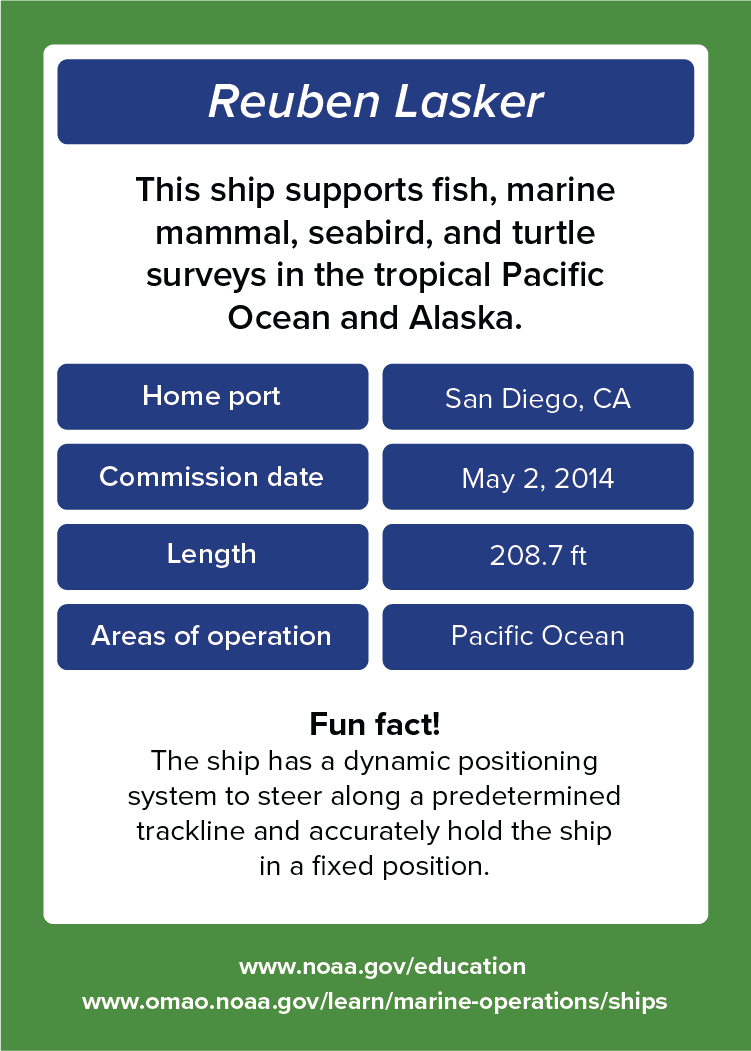
About
This ship supports fish, marine mammal, seabird, and turtle surveys in the tropical Pacific Ocean and Alaska.
- Home port: San Diego, CA.
- Commission date: May 2, 2014.
- Length: 208.7 feet.
- Areas of operation: Pacific Ocean.
Fun fact!
This ship has a dynamic positioning system to steer along a predetermined trackline and accurately hold the ship in a fixed position. Learn more about NOAA Ship Reuben Lasker.
Ronald H. Brown
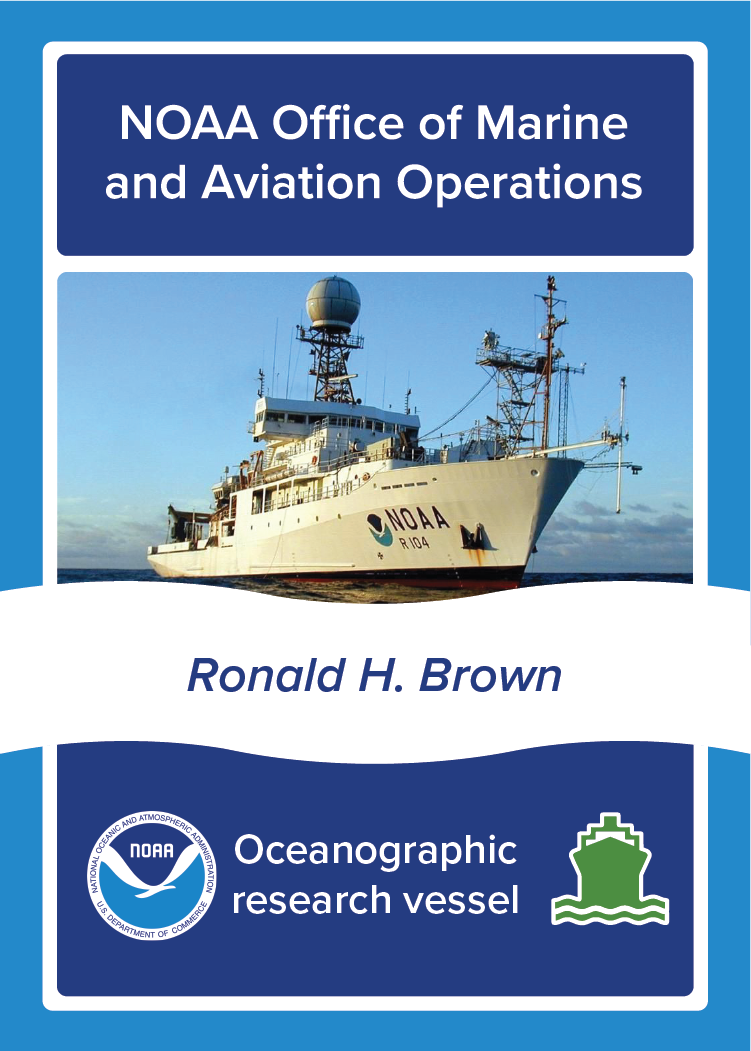
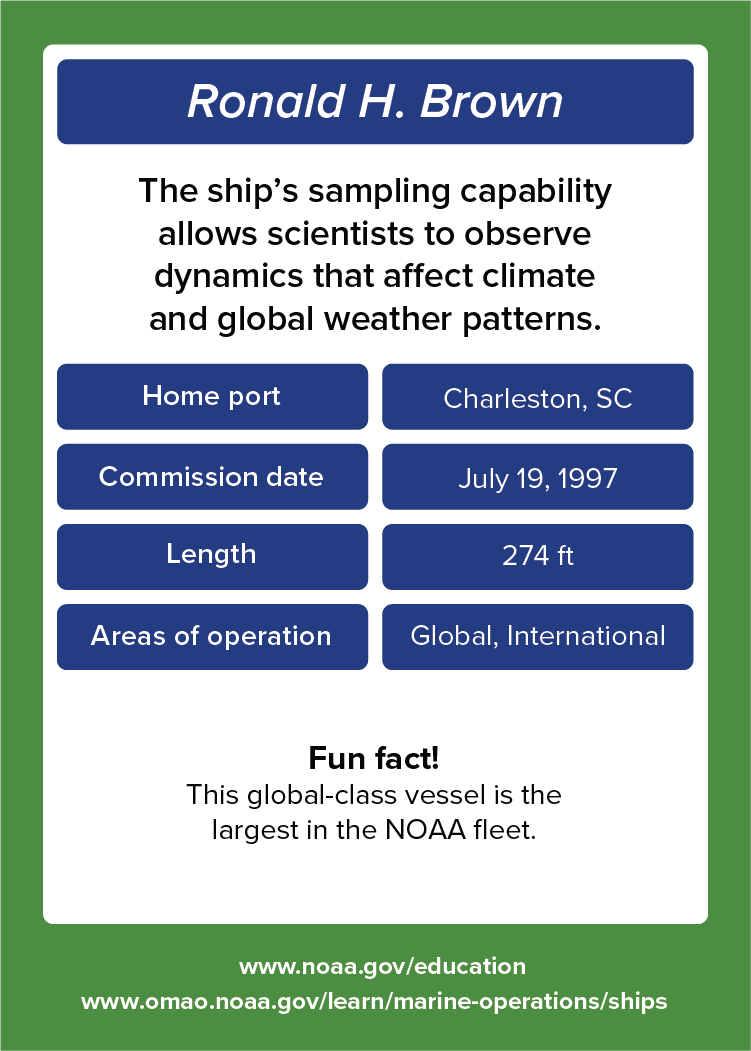
About
This ship’s sampling capability allows scientists to observe dynamics that affect climate and global weather patterns.
- Home port: Charleston, SC.
- Commission date: July 19, 1997.
- Length: 274 feet.
- Areas of operation: Global, International.
Fun fact!
This global-class vessel is the largest in the NOAA fleet. Learn more about NOAA Ship Ronald H. Brown.
Thomas Jefferson
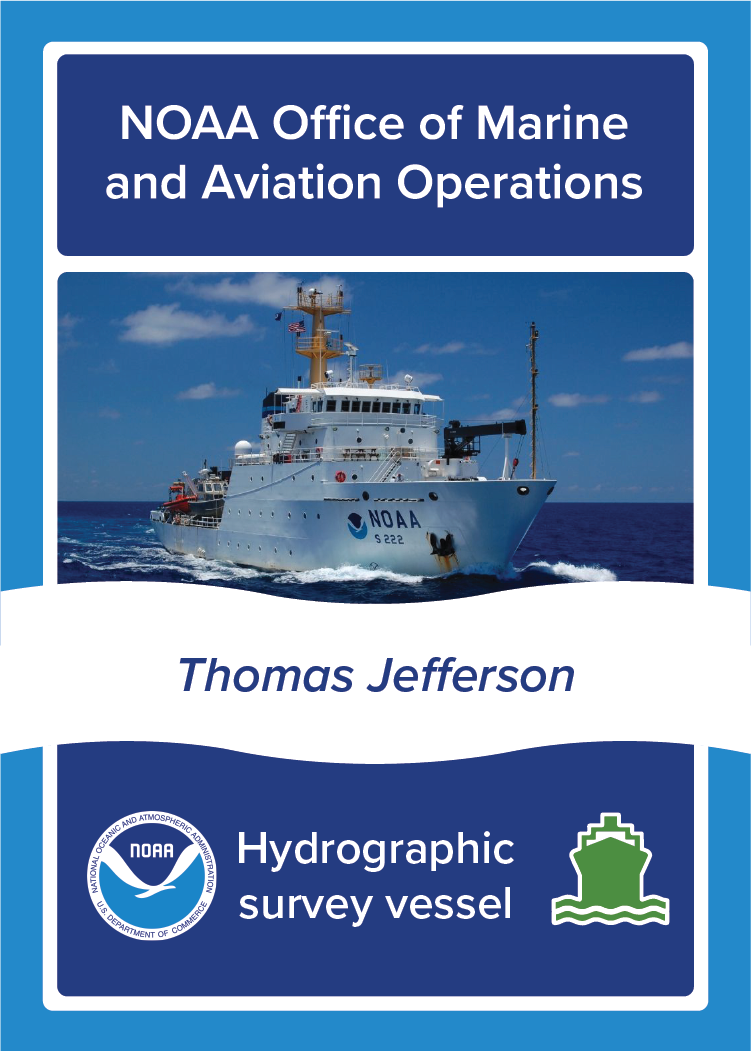
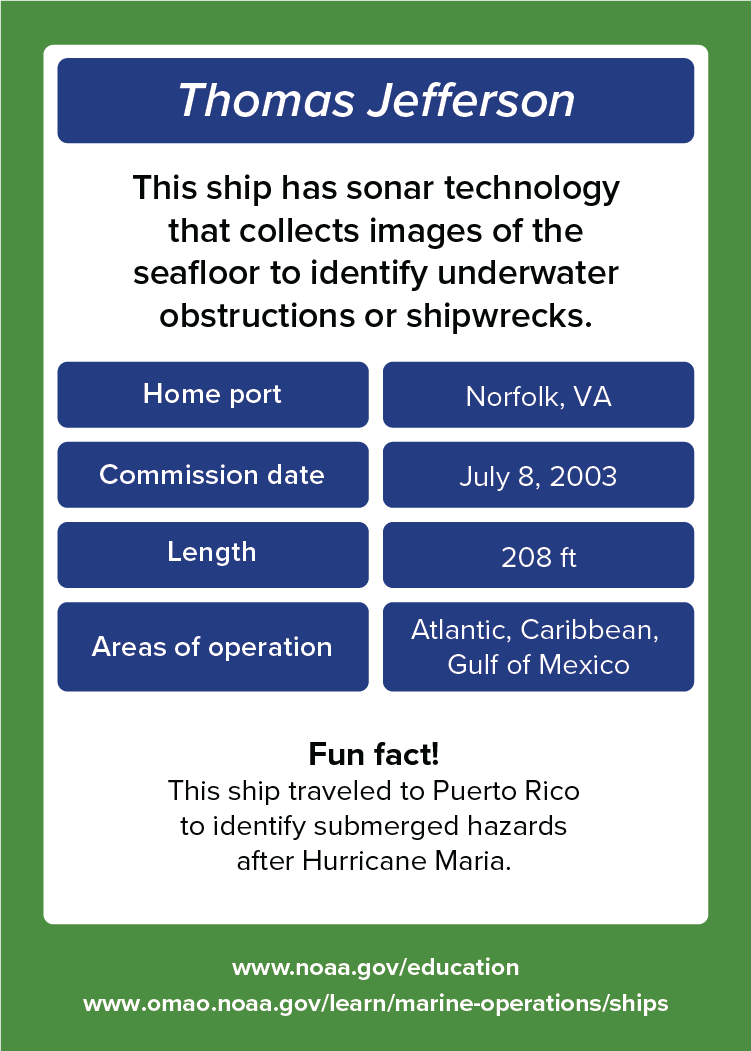
About
This ship has sonar technology that collects images of the seafloor to identify underwater obstructions or shipwrecks.
- Home port: Norfolk, VA.
- Commission date: July 8, 2003.
- Length: 208 feet.
- Areas of operation: Atlantic, Caribbean, Gulf of Mexico.
Fun fact!
This ship traveled to Puerto Rico to identify submerged hazards after Hurricane Maria. Learn more about NOAA Ship Thomas Jefferson.


